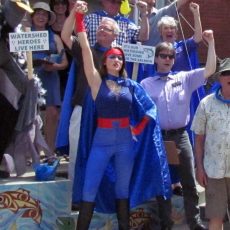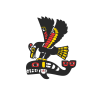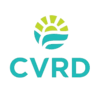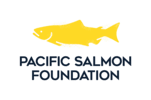
We want Cowichan watershed residents to use water wisely.
Indicator
- Annual residential water consumption is reduced by 20%, or less than 263 litres per person per day by 2018. [2023 Update: Due to capacity issues and the creating of a region-wide CVRD Drinking Water and Watershed Protection Service this Working Group disbanded upon completion of the 2014-2018 Conservation Challenge. (Read more below.) The CWB continues to collaborate on water conservation measures, particularly in the Koksilah sub-watershed. New Indicator is Pending.]
Rationale
The changing climate in the Cowichan region was the driving force behind a call to use water more wisely. Water shortages during summer and fall threaten salmon survival, local food growing, water quality, river-based recreation, local businesses, and in some cases, even residential water supply.
Although residential water use is a small percentage of local water consumption compared to industrial and agricultural uses, the CWB chose a residential target based on the “trickle up” theory: if we teach residents to notice and correct small leaks at home, they will bring that culture of conservation to the region’s workplaces.

Water Woman asks Cowichan residents to take a pledge to reduce water use. Photo by G. Iversen
Studies show that Canadians use far more water than residents in most other countries with similar living standards, proving we could live well on less water. Also, much of the water “use” in Canada is water waste from leaky pipes and taps, and that the amount of water waste can be correlated to water pricing. When prices go up, waste goes down!
Wasted water has many costs, from higher infrastructure and energy costs for water providers (and ratepayers), to dry wells and critically low river flows in some areas. With the increasing trend towards summer drought, coupled with an ever-growing population, it’s time for a culture of conservation.
This target was inspired by success in the Town of Ladysmith, where residents reduced their total water use by about 25% between 2002-2013, while the population grew by 20%. Ladysmith’s average residential water use at that time was 263 litres/person/day, so the challenge was to “meet or beat” Ladysmith!
Progress
In July 2014, the CWB launched the Cowichan Water Conservation Challenge with superhero Water Woman bursting onstage with regional leaders in downtown Duncan during the community’s annual summer festival. The Challenge was a five-year initiative to track and reduce residential water use.
Five water purveyors annually reported their data-- Municipality of North Cowichan, CVRD, Town of Ladysmith, Cowichan Bay Waterworks District, and Mill Bay Waterworks District—and they all succeeded in achieving some reductions in the per capita residential consumption of their water over the five-year period. The average residential per capita use during the Challenge decreased from 300 litres per day to 282 litres per day, or 8.6 percent measured against the 2013 baseline. Cowichan Bay, at 22.83 percent, was the only purveyor to beat the goal of a 20-percent decline in water consumption over the entire period, although Ladysmith had achieved that benchmark previously. (Details: “Its Hip to Fix a Drip!”.)
Around the same time, the CVRD ran a major public awareness campaign making the link between water use and the “new normal” in climatic conditions.

In addition, the CWB’s superhero program sent a variety of masked comic-book-style crusaders such as Water Woman, Flo, Raindrop and Leaky Hoser to public events, children camps, and participating storefronts since 2014. Rallying cries like “it’s hip to fix a drip” focus on valuing every drop, and the superhero approach framed the effort as an urgent but feel-good way for people to act in a seemingly daunting situation. In 2017, comedic spokespeople, the Cowichan Hosers, appeared in lumberjack shirts, Cowichan knit toques to encourage people to fix leaky garden hoses. See "How to Fix a Leaky Hose, with the Cowichan Hosers" video here. Calculations show that for every 100 leaky hoses fixed, approximately 1 million litres of water will be saved seasonally. By fixing a dripping hose once, residents will likely notice and fix drips in the future, so the benefits will “trickle up.”
In 2017, while the Fish and Flows Working Group focused on watershed-scale rain storage through raising the height of the weir at Cowichan Lake, the Water Conservation Group urged residents to do the same thing at home. A “Capture the Rain” campaign included classroom presentations aimed at home rainwater harvesting, and public workshops to Slow your Flow (drip irrigation) and Grow your Flow (rainwater harvesting). Media articles and editorials profiled local people who are taking the lead, demonstrating a wide variety of ways that people are capturing spring rain to mitigate increasingly dry summer conditions. A website provided tips and tools and inspiration.
Monitoring
Annual residential water use statistics were collected from the seven participating Cowichan Water Challenge water purveyors every spring with varied results. These are documented in the final report, “Its Hip to Fix a Drip!”. The average residential per capita use during the Challenge (2013-2018) decreased from 300 litres per day to 282 litres per day, or 8.6 percent measured against the 2013 baseline.
To the best of our knowledge, while water use was reduced, and support for the need for water conservation grew, the target indicator of 263 L/day residential water use has not been reached. A lack of consistent and coordinated water use data makes this impossible to measure with accuracy. But, lets keep trying!
Next Steps
- Continue public outreach and education initiatives targeting water conservation practices and strategies
- Work with public utilities, government and business partners to implement larger scale and systemic improvements, such as building code allowances for greywater, development permitting that requires rainwater capture, and financing for water conserving technologies

Cowichan Councilor Debra Toporowski joins Flo in the Conservation Cruiser! 2015
 Email
Email



